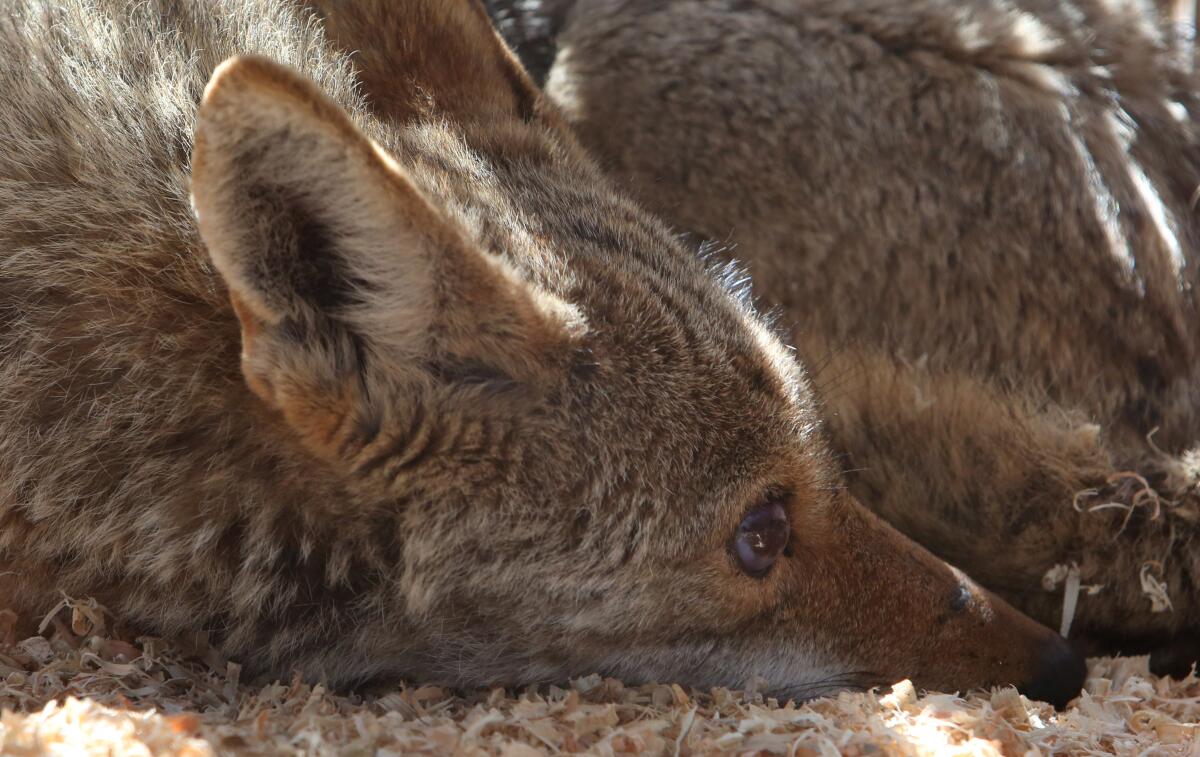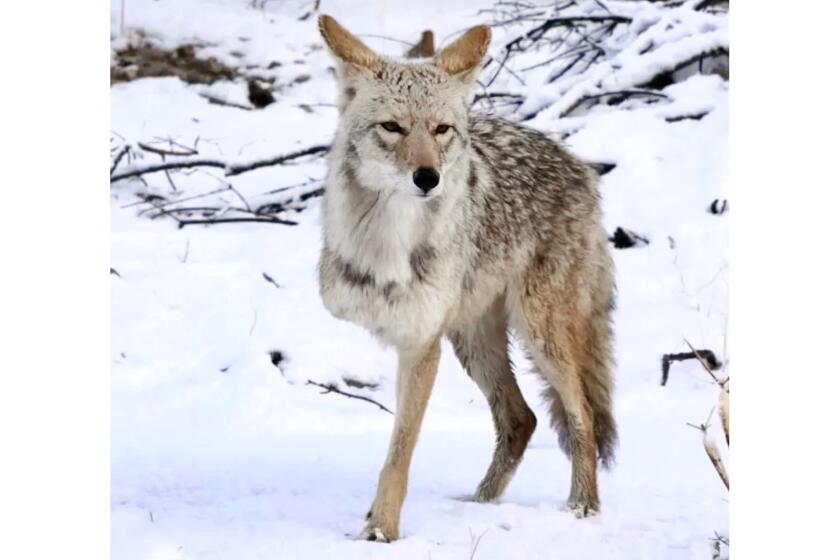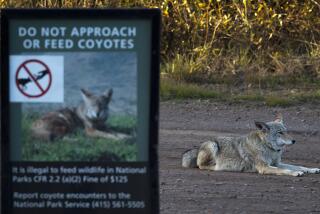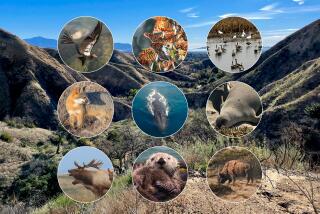It’s coyote pup season. Here are some precautions for pet owners

- Share via
The start of spring, a time when outdoor enthusiasts and their furry sidekicks hit the trails, coincides with coyote pupping season and experts say dog owners should take precautions on their next outdoor trek to avoid confrontations with overly protective coyotes.
In California, coyotes breed January through March and their pups are born between March and May, according to the U.S. Forest Service.
Coyote pupping season stretches from the time when coyotes give birth to when the pups become juveniles and leave their parents, said Niamh Quinn, human-wildlife interactions advisor for the University of California Agriculture and Natural Resources. The average litter is between five and six pups.
Once the pups are born they tend to emerge from the den three weeks later, Quinn said.
“Pups will stay with their parents for about six months, spring to summer, and will be taught how to hunt and behave in their environment by their parents,” Quinn said. “In the fall, which is when food becomes scarce, the parents will consider keeping their juveniles or have them disperse to be on their own.”
They started life as city boys.
Similar to any parent, coyotes become protective around their den and could even become aggressive during this time. Dens can be a steep bank, rock crevices, sinkholes or underbrush, according to the Forest Service.
During puppy season, Quinn said there is an increased potential for dog-coyote interactions when coyotes become very protective of their young. If a dog unknowingly wonders near a den it could be attacked.
Dogs and cats are also vulnerable during this time because coyote parents will be looking for more food to bring back to their young, and this could result in domestic pets becoming prey.
In some outdoor spaces such as San Francisco’s Presidio, a national park site, park managers will put signs near den areas alerting hikers and walkers to stay away from the area. Presidio’s precautionary measures include closing sections of Park Trail and Bridge Area Ridge Trail to dog walking, all of the park’s 24 miles of hiking trails continue to be open to people.
Everybody loves Tripod the three-legged coyote, but High Desert locals say that visitors are spoiling the beast with handouts and causing a dangerous situation.
Coyotes are part of the Southern California ecosystem, so sightings in the Santa Monica Mountains, San Gabriel Mountains and San Fernando Valley are common.
Last May, a Woodland Hills resident was visited by a coyote that walked into their home through a dog door. In the same month, a retired couple’s dog in Mission Viejo was attacked by a coyote.
The University of California Cooperative Extension operates a coyote encounter website that allows visitors to input their ZIP Code to see when the last coyote sighting was recorded.
Some precautionary measures hikers and their pets can take are researching a trail ahead of visiting it for any information on possible closures or warnings of frequent coyote sightings.
When a hiker decides to bring along their pet on a trail, keep the dog on a leash and be aware of your surroundings.
If the hiker and dog encounter a coyote, leave quickly by walking backward but do not run. Quinn said coyotes have the instinct to chase after moving targets.
“If a coyote approaches you, haze [or] yell and throw things like rocks [at] the coyote,” she said.
Call 9-1-1 if a coyote or other wild animal attacks or threatens to attack a human.
More to Read
Sign up for Essential California
The most important California stories and recommendations in your inbox every morning.
You may occasionally receive promotional content from the Los Angeles Times.












